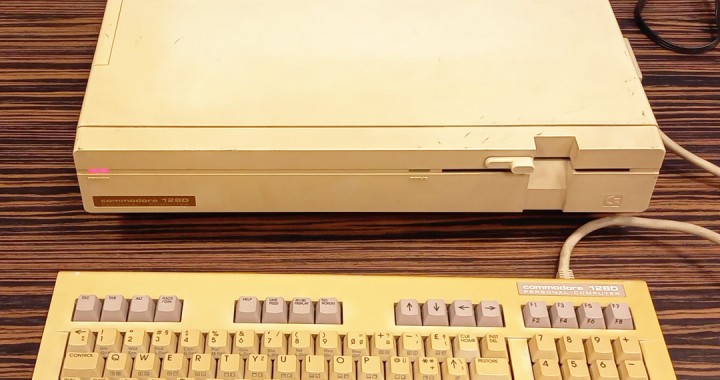The Commodore 128D is an 8 -bit personal computer produced by the Commodore Business Machines between 1985 and 1989. It is also known as C128D and CBM 128D. Presents the same characteristics as Commodore 128, ma ha un case diverso, più professionale: è un desktop, con tastiera esterna e drive Commodore 1571, da 5.25", integrato.

It is a very versatile computer and can work in different ways:
- Commodore 64, ensuring compatibility with the accessories, games and software of the C64;
- Commodore 128 on 40 columns monitor, using the audio/video door and the RF output;
- Commodore 128 on 80-column monitor, by means of the port Rgbi (two monitors can be connected simultaneously to the Commodore 128D);
- CP/M (Control Program for Microprocessor) system for Zilog Z80.
I purchased this computer On eBay, from an Austrian seller. It is equipped with a German keyboard. Instead of the button CAPS/LOCK top, there is a key Ascii/from that allows you to select the character set: standard or with German layout.
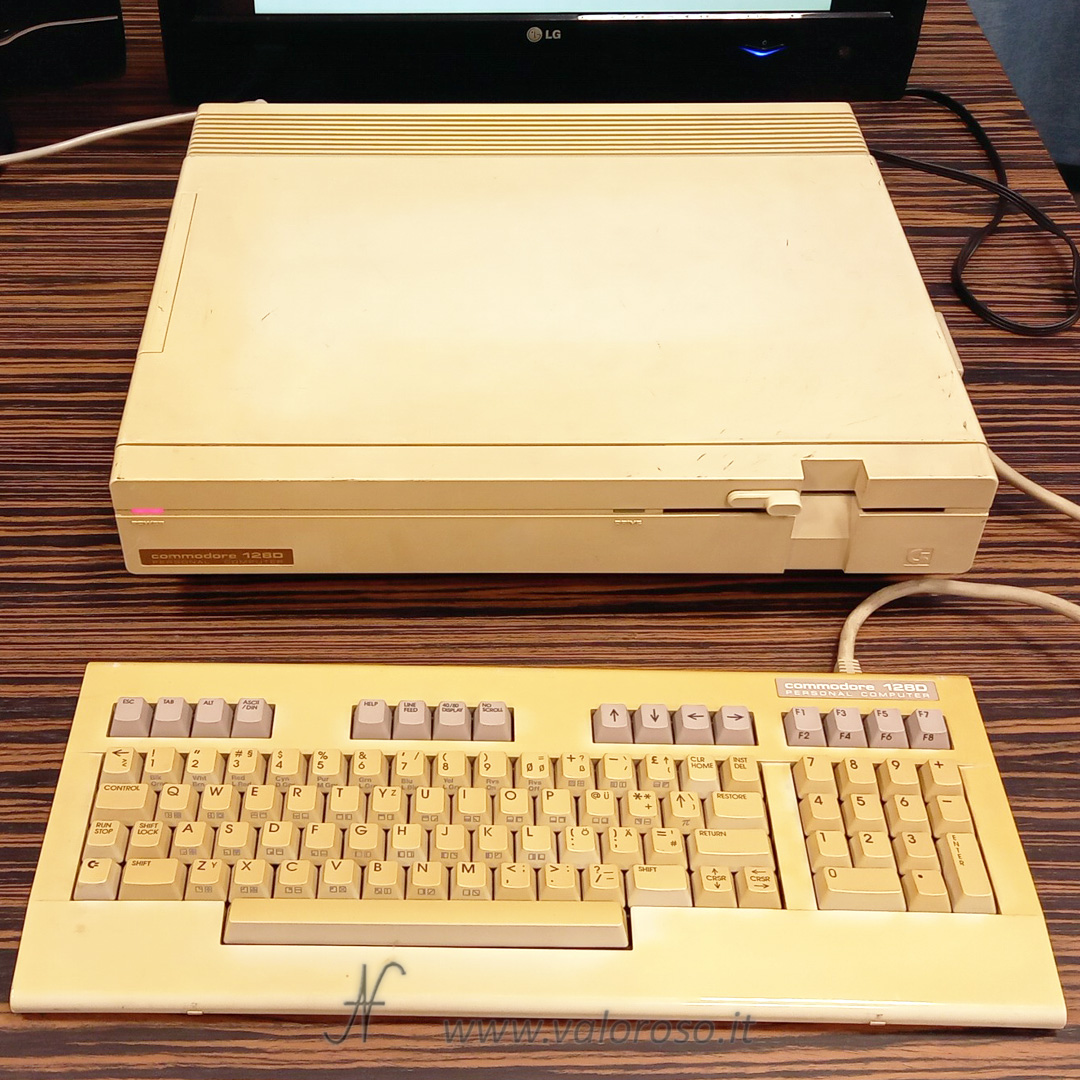
At the bottom of the plastic case, the housing of the computer's external keyboard is expected.
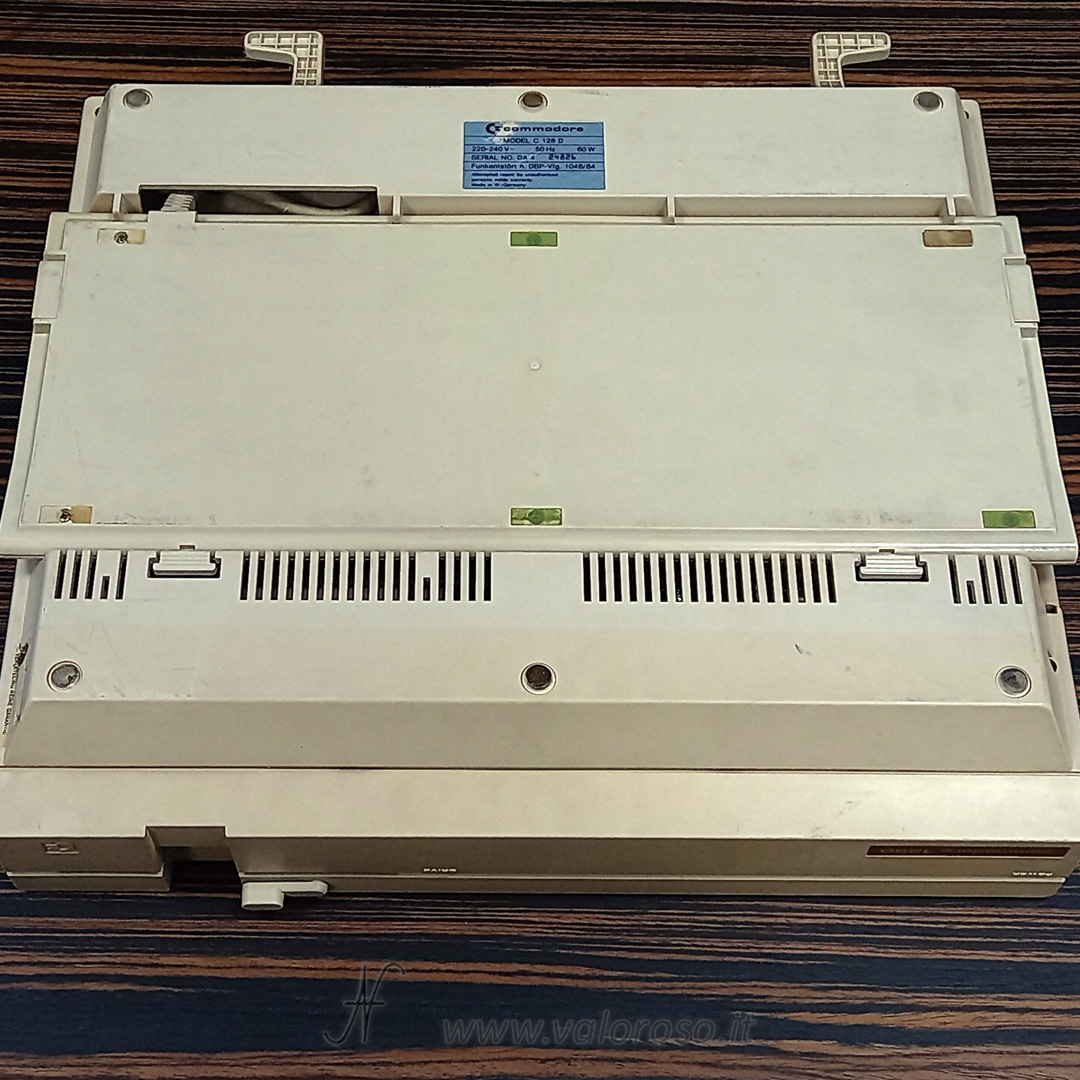
The keyboard connector connects to the right side of the Commodore 128D case. In addition to the keyboard connector, there are DB9 connectors for joysticks (or mice) and the reset button.


On the left side of the Commodore 128d, there is a handle, in addition to the ignition switch.
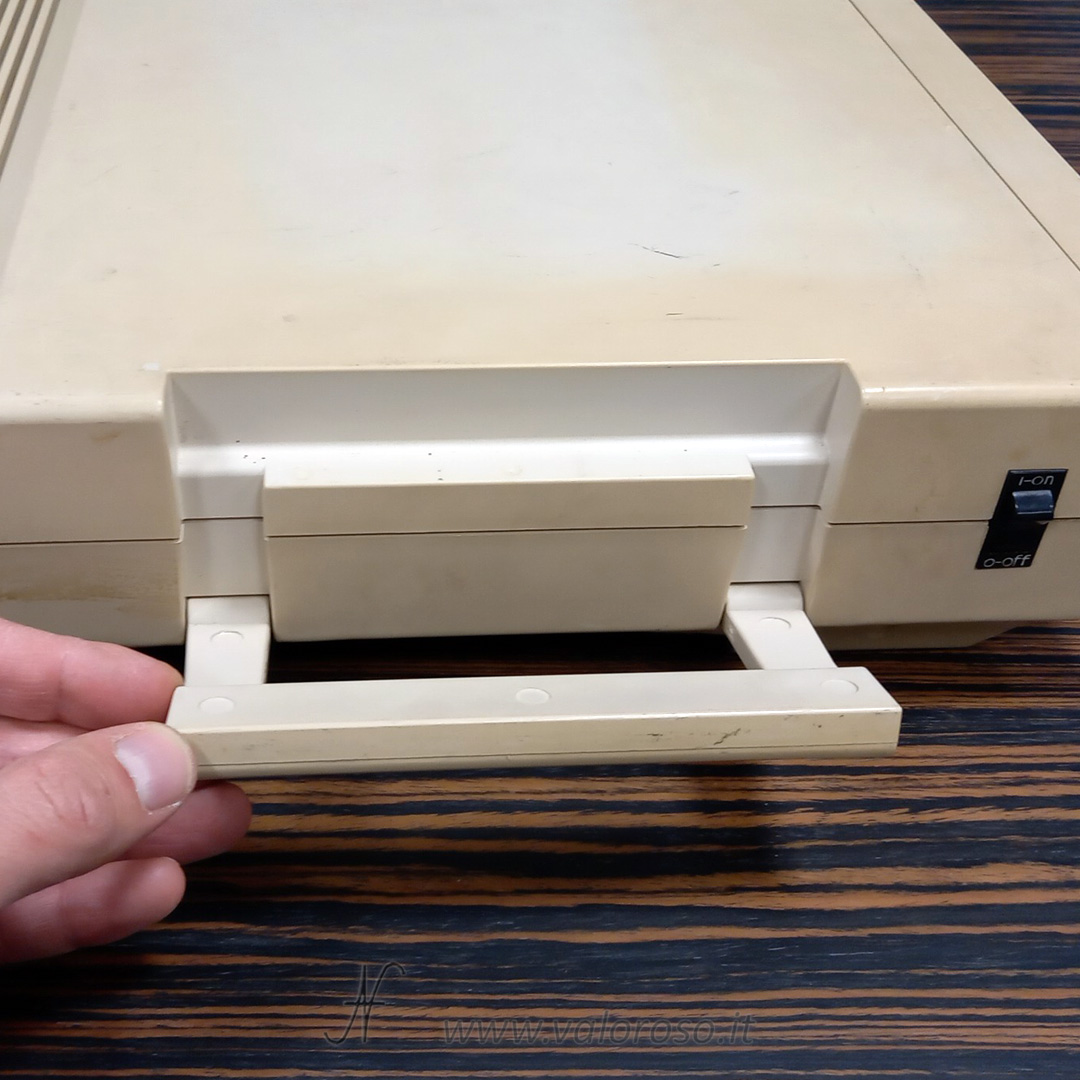
Technical characteristics of the Commodore 128D
The technical characteristics of the Commodore 128D are the same as the Commodore 128.
CPU:
- MOS 8502 2 MHz in 80-column mode or 1 MHz in 40-column mode (or even C64 mode)
- Zilog Z80 4 MHz for the CP/M+ operating system (although, due to hardware limitations, the actual speed is as if it were 2MHz)
ROM, in C128 mode:

- BASIC 7.0: 32 kB
- Screen editor: 4 kB
- I/O and character map: 4 kB
- KERNAL and hexadecimal monitor: 8 kB
ROM, in C64 mode:
- BASIC 2.0: 8 kB
- I/O and character map: 4 kB
- KERNAL and screen editor: 8 kB
RAM: 128 kB divided into 2 banks of 64 kB
Video chip:
- MOS VDC (in 80-column, C128, and CP/M mode)
- MOS VIC-II (in 40-column and C64 mode)
Audio: MOS SID
Keyboard: extended to 92 keys, with numeric keypad
Software included in ROM:
Supporto di archiviazione: floppy disk drive 5.25" interno, Commodore 1571
Expansion ports:
- 1 IEC Serial
- 1 User Port
- 1 Expansion port (for Commodore 64 cartridges)
- 1 Audio/Video (CVBS and S-Video composite video, for connection to 40-column monitors)
- 1 RGBI (80-column monitor connection)
- 1 Antenna (RF connection to TV)
- 1 Datassette port (cassette player)
- 2 Joystick Ports
- 1 Keyboard connector
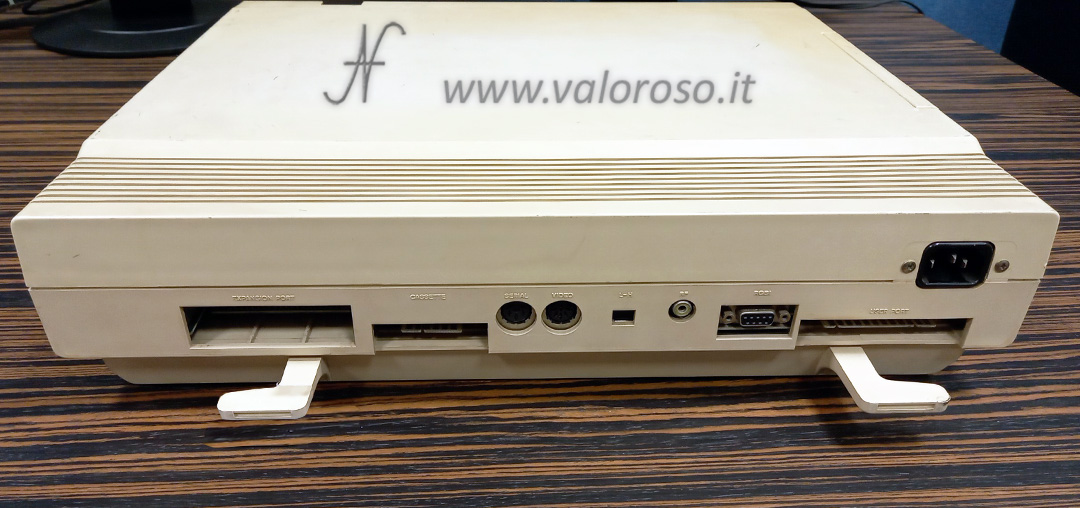
Emulation
It is possible to emulate the commodore 128d on a common Windows PC, through the VICE. In this way, it is possible to try to start programs and games, as well as program the back computer, in a simple and comfortable way ... without even having the commodore 128d!
Commodore 128D power supply
The computer power supply is internal. Tensions are as follows:
- 5V DC (for motherboard and drive)
- 12V DC (for drive)
- 9V AC (for motherboard)
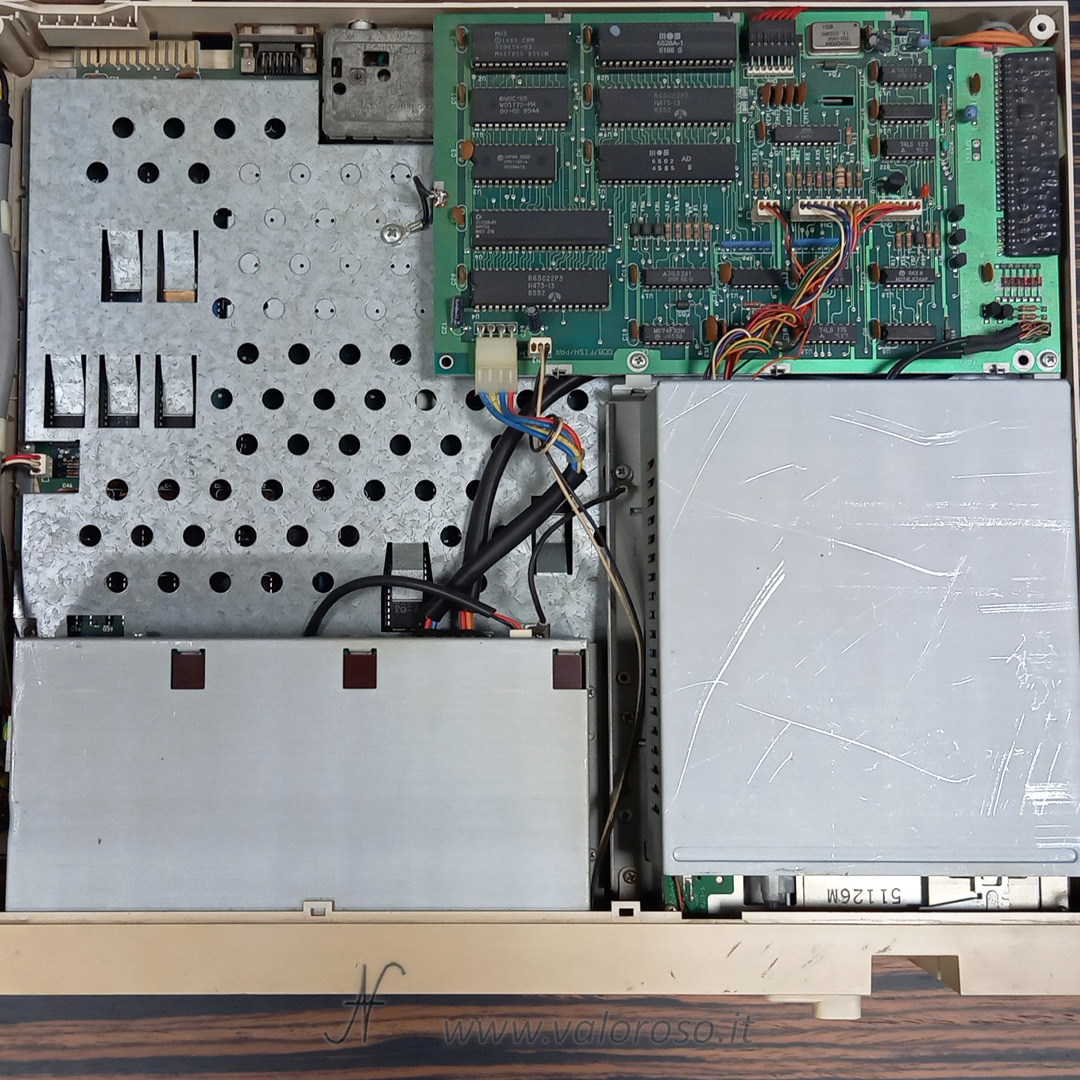
C128D boot screen
In native mode (Commodore 128), the vintage computer start screen is green. The video chip in Fuzione is the MOS VIC-II, the same as the Commodore 64, and the image is generated at the audio/video exit or antenna.
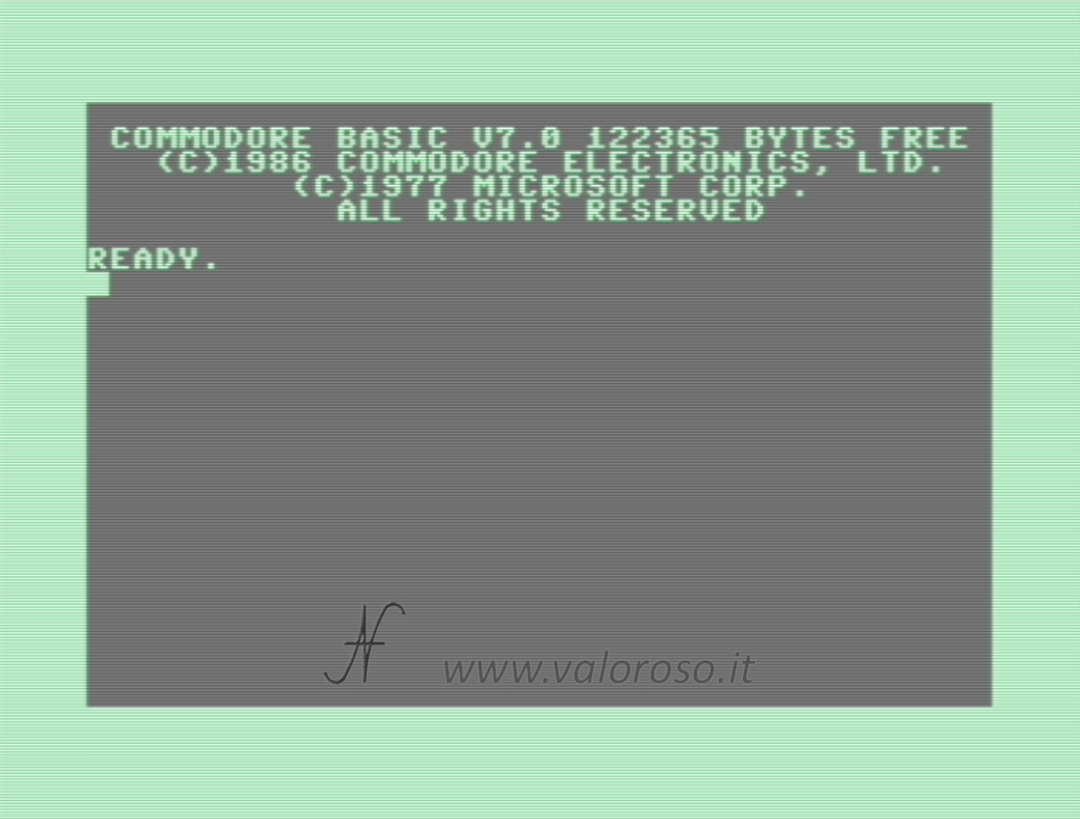
To switch to Commodore 64 mode, you can type GO64 on the keyboard, or you can hold down the Commodore key C= to the ignition of the computer. In C64 mode, the start screen is blue.


In C64 mode, keyboard keys do not actually go in the Commodore 64. The numeric keypad on the right is not operational, and the upper keys are not operational either, except for the function keys (F1-F8).
In 80-column mode, selectable with the 40/80 DISPLAY or with special commands in BASIC, the boot screen is with a black background and is generated by the VDC MOS chip, on RGBI output.
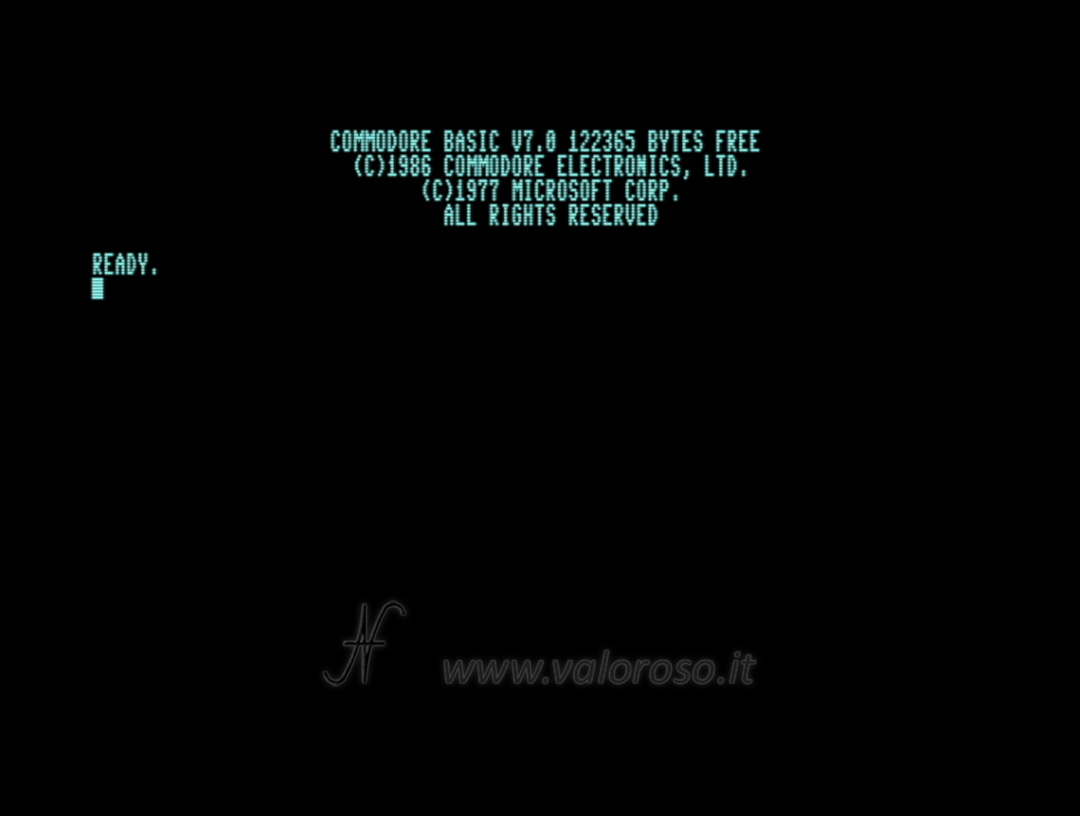
Booting the CP/M operating system from the diskette, the processor in operation is now the Z80. The boot screen of the CP/M 3.0 is as follows, having also typed a couple of commands (DIR To read the list of files contained in the disk e DATE to display the system date).
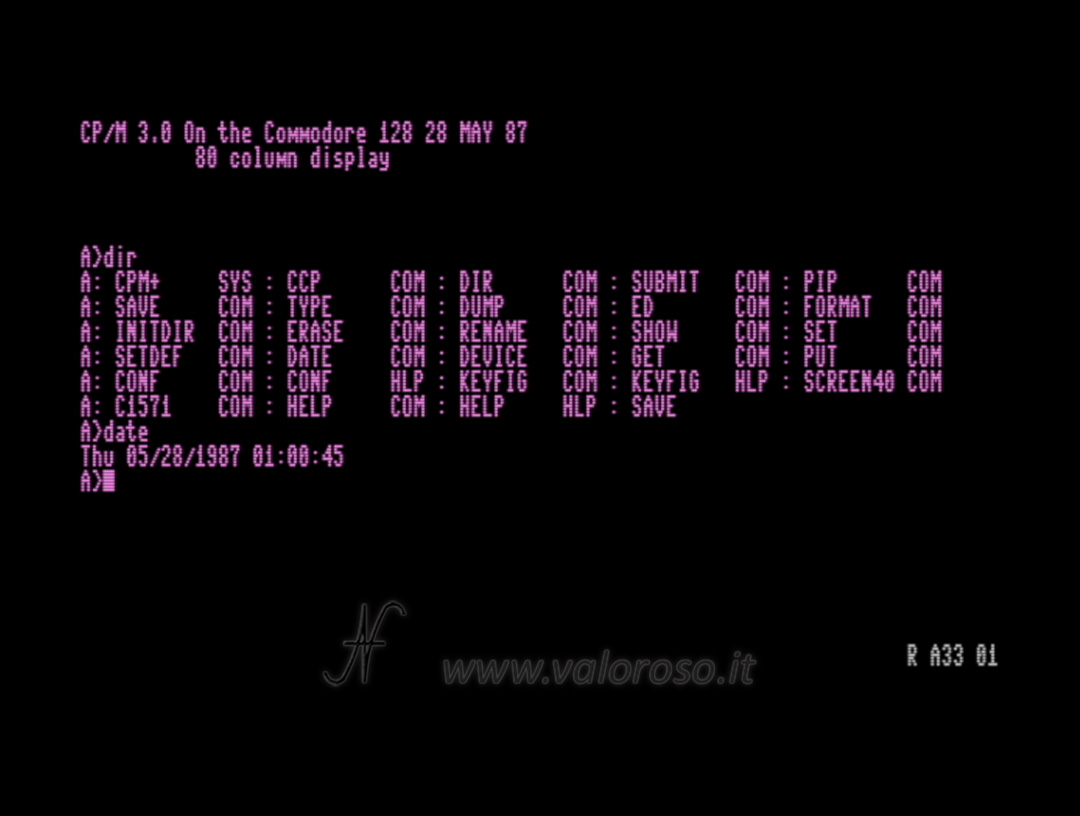
Papers
1. Commodore 128D introductory guide
2. Commodore 128D system guide
3. Commodore 128D manuale di sistema (ITA)
4. Commodore 128D service manual
